1. Introduction ↵
The value of history is derived from its obligation to view all factors and clues of the past that lead up to one particular moment, event or action and to give it meaning accordingly. Therefore, by recreating images and narratives of the past, history may be claimed as a source of power. The significance of the ‘Cattle Killing Movement’ of 1856-7 lies beyond just its periodical occurrence. By taking in the whole context, from prior to the events and consequently thereof, one can grasp themes and factors that could be pieced in different ways to formulate different narratives. That said, consumers of history must be aware that most of the sources left for historians to construct narratives of precolonial and colonial history in Southern Africa is derived from the archives of colonialists and/or proponents of colonialism. As such insightful caution must be exercised when reading and writing on topics such as the one this article intends to undertake, because it is inescapable for a historian to remain a hundred percent objective and distanced from his or her own consciousness of the material dealt with.
Consequently, this article seeks to show how in 1856, the stage was set for the ‘Cattle Killing Movement’, to serve as the last blow that offset the precipitation of the destruction of the precolonial Xhosa nation and their society. As a backdrop to this notorious historical event, it is critical to hold an understanding of Xhosa society prior to the influence that white colonialists had exerted on Xhosa institutions through their calculated actions underpinning their self-interests. This encounter began a process of disruption and consequently erosion of Xhosa institutions that were at the heart of Xhosa society. Against this, the milieu of 1856 will be described, prior to the moment of Nongqawuse’s prophecy, to illustrate the fertile soil in which the prophecy was sown to cultivate the ‘Cattle Killing Movement’. From this, the prophecy that was at the heart of the movement will be laid out as well as the reactions that it precipitated to sustain the momentum amongst the Xhosa people, while simultaneously casting division amongst them. Following the climax of the prophecy’s believers’ actions is the disillusionment and severe consequences that the movement incurred, which left the Xhosa people vulnerable to British governance coveted by aspirations of land, labour and the subjugation of the indigenous people of Southern Africa.
2. Pre-colonial Xhosa Society ↵
There is limited availability of conventional sources left behind by Xhosa people who resided in the pre-colonial era to construct a truly reliable representation of what Xhosa society looked like prior to the influence of the Boer or the British. Nevertheless, below should suffice to present an idea of the institutions that governed the lives of the Xhosa people and sustained them as a nation, with an added caution against a modern scope of perspective and comprehension.
2.1. The Xhosa Nation ↵
The meaning and origin of the word ‘Xhosa’ is uncertain, but in the Khoi language there is the word ‘//kosa’ which is given to mean ‘angry men’. [1] This article uses the period in which the amaTshawe instilled itself as the royal family, which dates back to the early 1600s, as a standpoint for the political and social understanding of Xhosa society. [2]
Borders in the precolonial era were not as we understand them today, because the people who occupied the lands would move flexibly and strategically according to their political, social and economic needs. The Xhosa occupied the region of territory that is today mostly understood as the Eastern Cape – between 1700 and 1850 they did not locate beyond the “west of the Sundays River or East of the Mbashe River”. [3] They form part of the Nguni group of Southern African people. The determent of their settlement was the fertility of land and the close proximity of water channels to meet the needs of the community and the livestock that they kept. [4] There is no clear evidence as to what the size of the population of Xhosa people was during this era. [5]
2.2. Political and Social institutions ↵
Precolonial institutions in Xhosa society worked in cohesive harmony to produce and sustain the communities and lifestyles of the people who undertook to reside in it as a Xhosa. It must be noted that these institutions allowed for integration so that the Xhosa people must not be understood as a purely biological grouping – but a heterogonous one. [6]
The Xhosa people resided in homesteads, which were made up of “beehive-shaped dwellings” that were constructed from clay, dung, long grass and branches. [7] Homesteads lay around a cattle-enclosure. The space of the cattle enclosure was a great distance from the actual dwellings and the in-between space was used for social and formal activities of the family. [8] Between the homestead and whatever water channel lay nearby, would be gardens of cultivated agriculture. [9]
The homestead head was the senior male of the lineage of the family and he resided with his wife, unmarried children and maybe some relatives. [10] The interactions, status and roles of the family in the homestead were dictated by kinship, which in turn governed acceptable and unacceptable norms of behaviour. Division of labour was subject to gender and age, but the extent of this division is unknown. [11] Men were relegated to the upkeep of the cattle and building. Women were relegated to the maintenance of the home, preparation of meals and cultivation of the garden. [12]
The structure of the district in which the homestead lay, can be seen much like an extension of the homestead. [13] Every head of the home was subject to a Chief in his district. All Chiefs were guided by councillors and they were entrusted by the people to maintain their well-being, to see them through difficult periods and act as arbitrator to conflicts brought to him. [14] Every district was governed by a Chief who was in effect part of a royal lineage that made up the network of the Xhosa kingdom governed by the King, who was regarded as the closest in lineage of the direct descendants of Tshawe. [15] The King in turn acted as a sort of paramount Chief over all of the Xhosa. He also had his own set of councillors and had power over all Xhosa Chiefs. For example, he could call for war and settle disputes between Chiefs. [16] His word was sanctity and he was the emblem of Xhosa nationhood. The home of every King and Chief was referred to as the ‘Great Place’.
Chieftainship was determined by lineage. The King’s first son would be the next to take his father’s place. When the sons of the royal bloodline (Chief and King) came of age and underwent an initiation ceremony, he would acquire followers from that ceremony who he would then leave with to start his own homestead and establish his authority away from his father. [17] This is how the Xhosa people extended their kingdom, in which all Chiefs were connected in a web of royal lineage.
Although lineage was the main determinant to leadership, this was kept in check by other factors. [18] For example, Chiefs could have more than one wife which could also result in conflicts over the status of sons. Usually there would be one wife (senior in rank) who would produce the heir and there would also be the Right Hand wife (secondary to the senior wife) who would produce the second ranking son. If one son was not deemed fit to follow, another could be chosen for whatever reasons propagated by the people. Therefore claims of illegitimacy or witchcraft served as power buffers. The Chief who ruled was thus only in power by the willingness of the people to recognise his authority and submit to him and his councillors, who played a significant role in this political structure.
Ownership of land was not applicable to European conceptualisation. Chiefs acted as trustees of the land. [19] He could give tracts of land to the people to occupy. However, the Chief was not liable to interfere in what his people did on the land or to reap all the produce of it. People paid judicial fines and tributes to the Chief. So although the Chief could be quite wealthy, the wealth was not so much for status and self-indulgence, but to feed back too and support the community through hardship and negotiations. [20]
When Chiefs fought conflicts and conquered other groups they would normally integrate their prisoners into their society. Resources of productive use were not wasted. [21] Chiefs would also welcome outsiders who were willing to submit to their rule. Land and livestock would be loaned to them as invitations of settlement. [22]
2.3. The Value of Cattle ↵
The land was exceptionally significant in the lives of the Xhosa; it gave them everything that they needed and their institutions revolved around it. In conjunction to land was the significance attributed to cattle. Both these entities formed the central basis of Xhosa society.
On a practical level, cattle provided milk and meat for the people. Its’ hides provided material and its’ dung, fertile for the soil as well as fuel. Its’ bones could be used for tools. [23] Cattle were also an indicator of wealth and status, because it was a central unit of value used to trade. [24] Men gained wives through the provision of lobola – payment made in cattle. Fines and tributes were paid by cattle. Thus, cattle in Southern Africa held more value than mere sustenance - “the cow’s function is to connect, to bridge, to invoke. Cows exist in a liminal space between the human and the divine, the physical and the spiritual, the alive and the ancestors, the worldly and the universal.’’ [25] Cattle were deeply knotted to the heart of the homestead, to the community and to the individual. This was indicated, for example, by the patterns of settlement and movement of the Xhosa as they always placed the grazing needs of the cattle as a priority. The cattle enclosures of a homestead were regarded as a divine and sacred space. [26]
2.4. Spirituality ↵
The Xhosa people practised spirituality more than they did religion. Spirituality was a way of life and was practised in the people's’ day to day activities. [27] Hence it was a large part of nature, which was believed to reflect Qama (God).
The Xhosa also believed that hidden presences governed their existence and gave meaning to their lives; hence they maintained a strong connection to their ancestors. [28] The ancestors of the Xhosa also served as mediators between the living and Qama. In this way there was no distinction between the secular and the spiritual. [29] People instead distinguished between evil and good spirits. Whatever misfortune or bad incident that occurred and that could not be explained was attributed to the evil realms. Witchcraft existed because of the belief that evil spirits could be manipulated against the living. [30] The good spirits, being the ancestors, were respected by way of ceremony and tribute. Diviners were like priests that assisted in the relations with ancestors. As stated by the anthropologist Soga, their activities included “cases of illness, sickness, poisoning, sudden death, lost property, failure of crops, epidemics of disease in human beings and cattle, mysterious deaths in flocks, times of natural calamity, asking favours of the ancestral spirits on behalf of some important tribal interest.” [31]
Precolonial Xhosa society was based on the relationship of the land and of the community it fostered. From this the political structure, governance of the royal lineage, spirituality, economy and social relations were conducted and maintained.
3. Colonial Onslaught ↵
Both the British and the Boer found reasons to push beyond the boundaries of the Cape Colony they had established through their disenfranchisement of the Khoi and the San. They began a process of encroachment on the Xhosa kingdom motivated by the lust for land but excusing themselves through the claims of cattle theft from the colony, runaway colony slaves and the do-good functioning of missionaries. The encounters that this process gave way too, set in effect a disruption of Xhosa institutions and began to enact changes in the dynamics within the society.
3.1. Rivalry ↵
“[T]he political system of the Xhosa was geared towards indefinite expansion. Every bull had the right to his own enclosure, every Chief had the right to his own enclosure, every Chief had the right to his own territory.” [32]
Chiefly rivalry was a likely part of the Xhosa political system. All other non-Xhosa groups were to be conquered, integrated, allied with or viewed as foes. Thus, the Xhosa were willing to consider the Europeans as a part of their political, social and economic network; but this did not align with the interests of the colonialists. [33] Instead they inserted themselves in the political arena and at times under the guise of alliance; whereby they would manipulate the dynamics in order to gain headway in colonial pursuits of their colonial policies. This is illustrated by the story of Ngqika.
Phalo was a King and in his Right Hand House he birthed a son by the name of Rharhabe, who had two sons by the name of Mlawu and Ndlambe. Mlawu died young leaving two young sons called Ngqika and Ntimbo behind. [34] Ndlambe held the regency whilst the boys were raised into manhood. The people wanted Ndlambe as the King but he insisted on grooming Ngqika, his nephew, and relinquishing the throne for him; a decision supported by King Khawuta – the Paramount Chief of Xhosaland. [35] However, as Ngqika grew older “his attitude was influenced by his councillors, who kept on saying Ndlambe coveted Ngqika’s kingship and wanted to undermine it.” [36] The men behind Ngqika and Ndlambe were at tensions with each other. One day Ngqika abducted Ndlambe’s wife Thuthula, which was regarded as an act of immense disrespect. However, the dispute was solved and the wife was returned before it spiralled into a full blown conflict. [37]
Ngqika was influenced by missionaries and colonial officials, which culminated in the 1817 meeting at the Kat River (where Fort Beaufort is located now). This event is known to be the point at which the Chiefs of Xhosaland realised that Ngqika had sold them out, for the Governor Lord Charles Somerset addressed Ngqika as though he were the King and Paramount Chief. [38] Antagonism built against Ngqika, resulting in the 1818 ‘War of Amalinde’ wherein the Chiefs rallied to defeat him thereby teaching him a lesson. [39] However, Ngqika sought help from Somerset who then sent an army that defeated the Ndlambe. [40] The alliance between Ngqika and the colonialists started off well in that Ngqika ascended in power over the Xhosa nation, but it was at the expense of losing some of his land and the encroachment of his sovereignty for the Governor held him responsible for the elimination of cattle-raiding. [41] The relationship that Ngqika held with the colonialists was illustrative of the encroachment made on the sanctity of the position Chiefs held in Xhosa society.
3.2. European Commodities ↵
Other than the use of political expediency, colonialism involved the consistent persuasion of the buy-in of their ‘civilization’ propaganda. Initially the Xhosa were not impressed by much about the Europeans except their guns and horses. [42] Parallel to wooing the Chiefs, the onslaught of cultural imperialism, intended to attack and replace Xhosa institutions, was pushed through trade and missionary work.
Trade between the Europeans and the Xhosa began in the early 18th century. [43] However, the ‘economy’ of the Xhosa was centralised and geared towards the accumulation of cattle. [44] Items used in trade were cattle, copper, beads and iron. [45] As trade developed with the Europeans, new commodities, such as clothing, were introduced into circulation. One example of such a development was the establishment of a regular and monitored trade fair established in Fort Willshire, near Ngqika’s territory, in 1824. [46] The weight of these interactions soon fell against the Xhosa, as European traders managed to dominate the control of supply with their modes of transport. More so, they extorted, threatened and antagonized the Xhosa whilst at the same time effectively creating an arm of dependence on the colony. [47] This was done by way of the commodities that they had introduced into circulation which meant the bead currency of the Xhosa gave way to a money economy by 1829 - thereby sealing their fate of economic subordination. [48]
The exposure to Europeans also stimulated an increase in agriculture traced in 1835. [49] This was incorporated in trade to meet the needs of the colony of products such as mimosa gum, sorghum, maize, oat hay and barley. [50] The turn to agricultural endeavours symbolised a reorientation of values encouraged by Christianity, because it took the emphasis away from the cattle which was regarded as a source of subsistence - not ‘real work’. ‘Real work’ was a virtue and could be found in the fields. [51]
This in turn fed into the labour needs of colonialists. The 1st Xhosa servants are dated back to 1777 and they were either kidnapped or prisoners of war. [52] Voluntary acts of labour service were done in the hopes of using their payment to start their own homesteads. [53] However, colonial employers found ways to exploit and deprive their employees of their pay. [54] This early labour service was a precursor to harsher contracts that reduced the autonomy of individuals to be able to go back home and support themselves.
It was not enough to introduce products to the Xhosa. European colonialists had to create “artificially induced wants” so that “[t]he new spirit of commodity production…succeeded in weakening existing social relationships by elevating the market principle to the centre of society.” [55] For this, amongst other things, the missionaries came in hand.
3.3. Missionary Influence ↵
Missionaries played more of a significant role in the affairs of colonial governance than merely preaching the gospel and converting the indigenous people to Christianity. Dr Philips, the Superintendent of the London Missionary Society, put it aptly:
"While our missionaries are everywhere scattering the seeds of civilization . . . they are extending British interests, British influences and the British Empire. . . . Wherever the missionary places his standard among a savage tribe, their prejudices against the colonial government give way; their dependence upon the colony is increased by the creation of artificial wants”. Industry, trade and agriculture spring up” [56]
The exposure to Christianity brought into circulation new concepts of spirituality. [57] The idea of ‘Resurrection’ could arguably be the most influential concept considering the nature of prophecies. The historian Peires, brings forth the notion that the ‘Resurrection’ concept filled a gap in Xhosa belief by helping to explain death; a phenomenon that the Xhosa had no comprehensive explanation for. [58] However, even with exposure to Christianity from the missionaries, people were selective about what they accepted into their realm of spirituality. Take Nxele for example; he grew up in the Cape Colony and was exposed to Christianity and European culture. He had resided in Grahamstown and had been in close association with missionaries such as James Read. [59] Nxele was also called to be a diviner and so his personal experiences, political consciousness, tradition and understanding of Christianity was fused into a “comprehensive cosmological synthesis”. [60]
Cultural imperialism generally went hand in hand with the preaching of the missionaries for they reproached traditions such as polygamy, lobola and witchcraft/hunting. [61] These traditions formed significant blocks of the functioning of Xhosa society. Converts were initiated in a process of westernization and as such Christianity did not operate in isolation but in connection with commerce and labour goals.
The establishment of missionaries were an infringement on the sovereignty of Chiefs. “The mission station itself was the spearhead of that attack on the authority of the Chief for there the Christian converts put up their dwelling and were separated off from the rest of the tribe”. [62] In this divide and rule tactic disguised by Christian salvation, Xhosa culture could be severed in favour of European culture. In addition, missionaries served as mediators between colonial governors and Chiefs, but covertly pushed the imperial project.
3.4. Colonial Violence ↵
Other than weaving its way through the institutional heart of Xhosa society, colonialism employed overt violence and arrogance. What followed the claims of cattle-raiding in the Cape Colony was the formation of commandos. Commandos were basically men who undertook military patrols and they had the power to follow the trail of stolen cattle to the nearest Xhosa homestead wherein they would demand restitution and grab their cattle to make up for the losses of their own. [63] The reality was that sometimes colonialists were simply negligible in the care of their cattle and they would use the commandos for outright theft. [64] Nevertheless the commando outings were sporadic and extremely violent with no distinction between the guilty and the innocent. [65]
Encroachment against the sanctification of the Chief’s authority did not exclude blatant acts of disrespect and offensive attacks against the royal individuals themselves. This, along with the destructive war tactics of the colonialists, was new to the Xhosa, because even “In traditional warfare, the life of a Chief was regarded as sacrosanct.” [66] Illustrative of this was King Hintsa’s assassination. Against the backdrop of the ‘6th Frontier War’, on the 29th of April 1835, King Hintsa entered the British camps on the Governor’s promise that he would be safe to negotiate purposes. [67] However, they imprisoned the King and threatened him. When King Hintsa tried to escape during a point in which the party marched along near Nqabara River, he was shot in the back and his dead body was mutilated by the colonial soldiers. [68]
What makes the colonialists different to other groups in the indigenous political system was that they had no true intentions for integration. [69] They had only intensions of usurping the power of Xhosa Chiefs and uprooting the Xhosa nation from their land; on the basis of their perceived superiority and coveted agenda of bringing ‘civilisation’ to Africa.
4. Dawn of the Prophecy ↵
Historically constructed and referred to as the ‘frontier wars’ dating from 1779 to 1878, this set of clashes and conflicts exemplified the move from disruption to total onslaught of colonial imperialism upon the land of the Xhosa, the destruction of its organic structures and the indoctrination of the people to serve the interests of colonial governance. With the dawn of the prophecy setting in, resistance continued but the stakes were set against the Xhosa nation.
4.1. Mlanjeni’s War ↵
Mlanjeni was a diviner in the Ndlambe district of British Kaffraria (territory between the Great Kei and the Keiskamma under colonial governance) and particularly known for his uncanny abilities to identify witches and eradicate evil spirits (ubuthi) from them. [70] He preached of a greatly anticipated event that would see the dead arising and witches cast into hell. [71] Mlanjeni grew popular throughout British Kaffraria, Xhosaland and the Cape Colony and subsequently evaded capture by the colonial officials. [72] He was as influential on the Xhosa nation as the war doctor Nxele. For preparation of the event, he ordered the killing of cattle alongside administering Xhosa warriors for battle. [73]
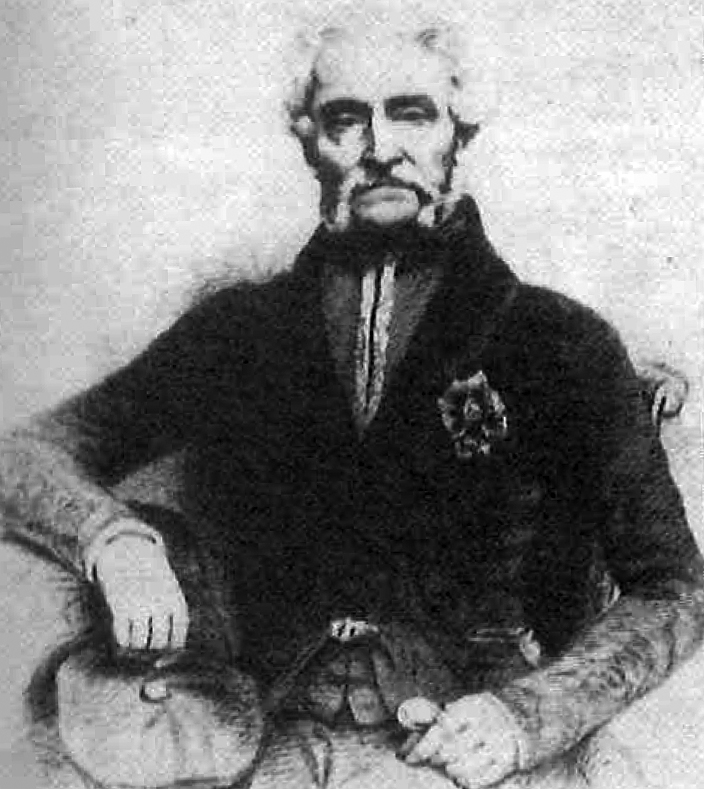 Governor of the Cape Sir Harry Smith: Peires, Jeff. The Dead Will Arise: Nongqawuse and the Great Xhosa Cattle-Killing of 1856-7. Johannesburg and Cape Town: Jonathan Ball Publishers, 2003.
Governor of the Cape Sir Harry Smith: Peires, Jeff. The Dead Will Arise: Nongqawuse and the Great Xhosa Cattle-Killing of 1856-7. Johannesburg and Cape Town: Jonathan Ball Publishers, 2003.
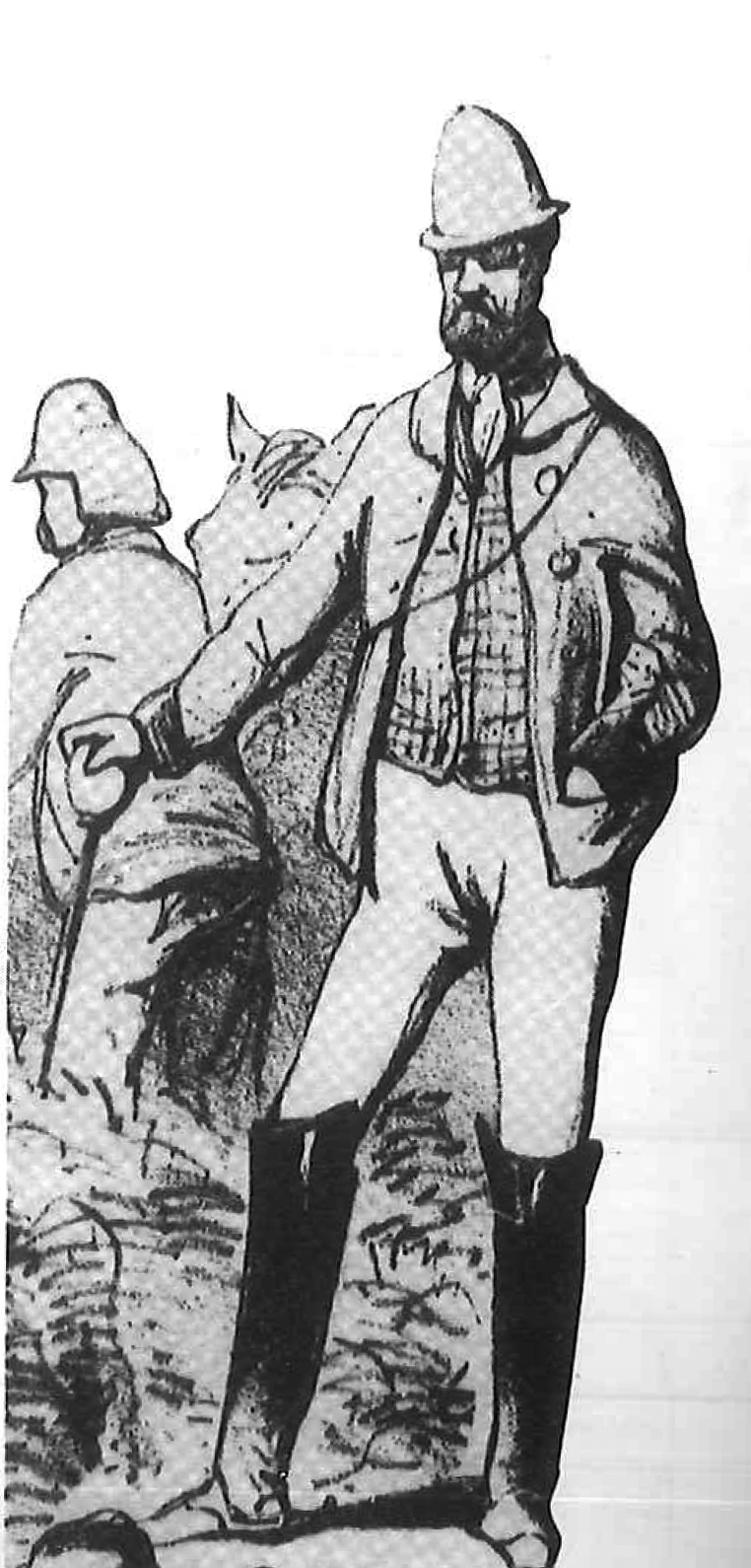 Lieutenant-Colonel William Eyre: Peires, Jeff. The Dead Will Arise: Nongqawuse and the Great Xhosa Cattle-Killing of 1856-7. Johannesburg and Cape Town: Jonathan Ball Publishers, 2003.
Lieutenant-Colonel William Eyre: Peires, Jeff. The Dead Will Arise: Nongqawuse and the Great Xhosa Cattle-Killing of 1856-7. Johannesburg and Cape Town: Jonathan Ball Publishers, 2003.
The precipitator of the war was the attempted disposition of Chief Sandile, head of the Ngqika section of the Xhosa nation, in place of Charles Brownlee. [74] This blatant inconsideration of the sanctity of the Chief fed a rallying force behind him. In December 1850, the Governor Harry Smith met the Xhosa people on the slopes of the Amathole Mountains to broker terms of reconciliation, but the next day he sent forth an armed force “to make a show of British strength” thus inviting attack from the Xhosa. [75] This war saw a strong force of unity from the Xhosa as even the ‘Kaffir Police’ (a paramilitary group of collaborators) rebelled against their white officers and the Khoi settlers in the Kat River Valley abandoned their traditional alliance with the colony to join the Xhosa’s battle against white domination. [76] The war continued till 1853, with the Xhosa suffering huge bouts of defeat and trying to curb the losses by making appeals to peace; however, nothing but “unconditional surrender” was acceptable to Smith. [77] The Xhosa held their own quite strongly, but the tactical campaign initiated by Lieutenant-Colonel William Eyre, of targeting the vulnerable homesteads and sources of subsistence, changed the tides of the war. [78] The nature of the fighting against the Xhosa was exterminatory: “The colonial sources are dotted with references to those Xhosa shot dead while asleep or feigning death, or burned alive in their dwellings.” [79] In the end more land was lost as the Xhosa were dispersed from the Amathole district which became the Crown Reserve. [80] Destitution loomed over the Xhosa who suffered vast losses in the war.
4.2. Land and Subsistence ↵
With the loss of the Ngqika’s land and the resulting compression of them and the Ndlambe people in the territory of ‘British Kaffraria’ the Rharhabe were by way of arms and ammunition, subjugated under colonial governance, but not yet broken as a Xhosa nation for King Sarhili with the Gcaleka, still ruled independently in Hohita beyond the borders set up by the British. [81]
The effect of the theft of the land seeped into the institutional structures of Xhosa society. Sons of Chiefs were no longer able to freely conquer and occupy land to begin their own Chiefdoms. Movements for greener pastures along grazing needs of the cattle were now restricted thus impacting the health of the cattle. The physical dwellings of the Xhosa were now forced closer together and close proximity to access to water was not guaranteed. Deprived of their means of subsistence many Xhosa were forced into labour for colonialists on the basis of survival.
4.3. Erosion of Royal Power and Governance< ↵
When George Grey came in as Governor after George Cathcart, he brought forth his plans to implement ‘civilization’ which included the building of public works undertaken by Xhosa through the submission of their labour, the introduction of wages to meet subsistence needs, education to create a class of elites, the use of missionaries to educate and inculcate the Xhosa into labourers, European medicine and technology and individual land tenure to further drive the wedge between the layman and the Chief. [82] Grey also went back on the agreements of Cathcart to not infringe on the governance of the Chiefs, because as much as the Xhosa were held hostage under colonial government their national identity and cultural sovereignty remained intact. He targeted the material basis of the Chief’s power, being the judicial fines collected from the people as an independent source of revenue from the colony. [83] Another significant element of this was the witch-finding activities which also allowed wealth of the guilty to pass into the hands of the Chief. [84] The Governor interfered in this structure by introducing a fixed monthly salary of money as an income to the Chiefs and their councillors and as a measure of evoking further dependence. [85] Grey also placed magistrates at the helms of the Chief to ‘assist’ in dictating and carrying out laws to the people. [86]
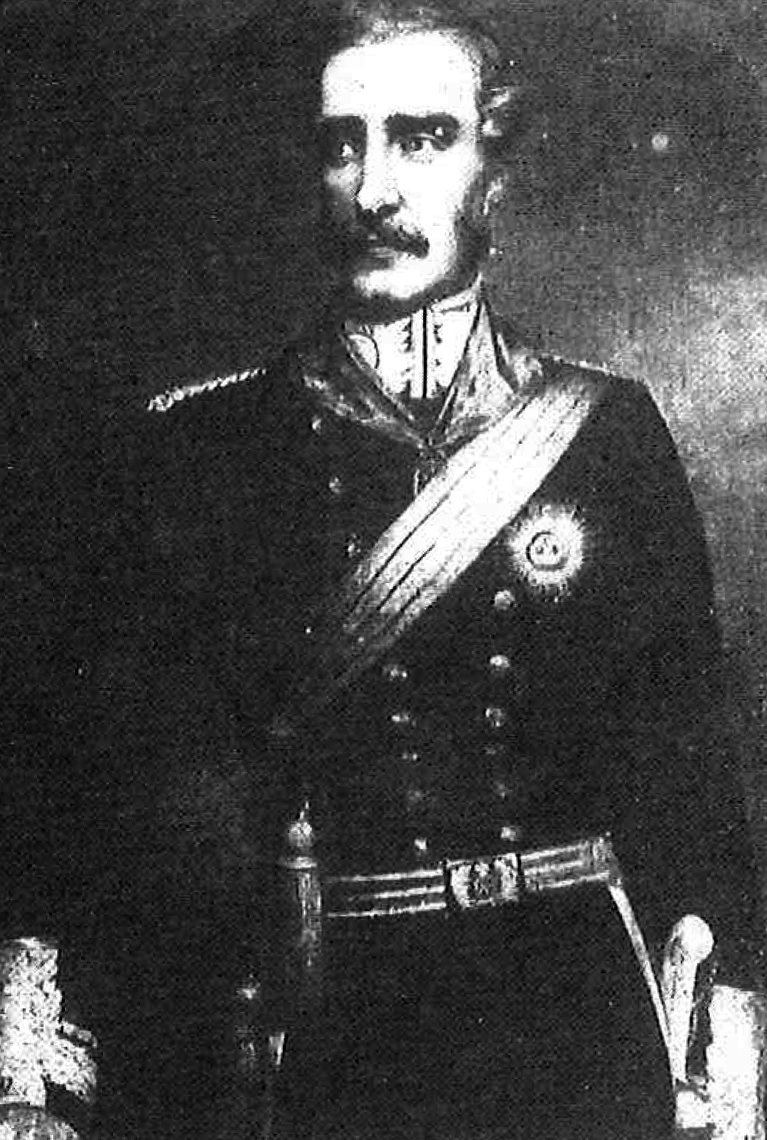 Sir George Grey, Governor of the Cape: Peires, Jeff. The Dead Will Arise: Nongqawuse and the Great Xhosa Cattle-Killing of 1856-7. Johannesburg and Cape Town: Jonathan Ball Publishers, 2003.
Sir George Grey, Governor of the Cape: Peires, Jeff. The Dead Will Arise: Nongqawuse and the Great Xhosa Cattle-Killing of 1856-7. Johannesburg and Cape Town: Jonathan Ball Publishers, 2003.
In addition, by 1856, Chiefs were also divided in terms of resistors and collaborators in the face of colonial governance. However, simplistic these terms considering the complex position that each Chief occupied, the priority of the political arena was to manoeuvre to survive. Europeans had become so adept at being able to strategically intervene in the affairs of Xhosa politics that the disruptions of their presence and relations meant that the system was “Deprived of the means of disciplining its recalcitrant, [such that the] kingdom was inevitably bound for political fragmentation.” [87]
4.4. Lungsickness ↵
Parallel to colonial onslaught was the spread of lungsickness; aptly put “Truly, it seemed as if nature herself was in league with the enemies of the Xhosa.” [88]
Lungsickness was a cattle disease that had already left destruction in its wake in Europe. In September 1853, it was brought to South Africa, through the harbour in Mossel Bay, by a Dutch ship carrying Friesland bulls. [89] The disease was a bacteria that was not easily detected and could lay dormant while simultaneously infecting other cattle. It crept on the lungs of the cattle as a yellowish fluid, sticking to the ribs. When it spread it putrefied the animal from within. [90] It caused the cattle constipation, diarrhoea, severe breathing problems that resulted in the cattle being paralysed, unable to eat and frothing at its mouth.
The disease was first detected at Uitenhage in 1854, from where it spread to Fort Beaufort and then to King Williams Town in 1855 where it made its way to the territories of Chiefs’ Mhala, Phatho and Maqoma till it reached Butterworth and spread in the lands of King Sarhili in 1856. [91] The last to be affected was the Ngqika. The disease was extremely difficult for the people to contain and manage. The Xhosa tried to drive their cattle into seclusion, fenced off pastures, buried their infected carcasses deep in the ground, and executed those who disobeyed the quarantine regulations and even those suspected of witchcraft. [92]
At the same time the maize was also infected by a species of grub that attacked the roots and destroyed the stalks before the corn ripened. [93]
4.5. Prophesying Trends ↵
Scholars argue that in the face of extreme difficulties people tend to turn to spirituality and faith for assistance or explanations. Prior to Nongqawuse’s prophecy, came forth a number of similar prophecies. By 1855, more than five prophets had emerged in British Kaffraria saying that they were in contact with the black nation across the sea that would come to the aid of the Xhosa. [94] The black nation was reference to the Russians who had killed George Cathcart in the Crimean War. [95] The prophets preached that the Xhosa people should stop cultivation and kill their cattle. [96] One prophetess even ordered the erections of new cattle enclosures that were anticipated to be filled. These prophets were largely anti-white in their sentiment. [97] Those who adhered to their words were the people affected the most by the spread of lungsickness, like Chief Phato’s district. [98] However, the trend of these prophecies died down by March 1856 when the Russians made peace with the British and the Crimean War ended. [99]
When Nongqawuse made her prophecy against the backdrop of impending destitution, it fell on fertile ground to be received by the Xhosa nation, weakened in their resistance against colonialism.
5. Nongqawuse’s Prophecy ↵
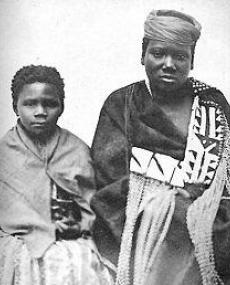 Nongqawuse (on the left) Image source
Nongqawuse (on the left) Image source
Nongqawuse was the adopted daughter of Mhlakaza, a councillor of King Sarhili. One day in April 1856 she and another girl by the name of Nombanda, went to the fields near her uncle’s homestead. [100] This was located to be on the banks of the Gxarha River, which was situated east of the Great Kei River and home to a landscape that was part ocean, bush, river and cliffs making up a scene of intricate natural wonder. [101] It was here that two strangers, declaring themselves as ancestors, appeared to her making the following pronouncements:
- the dead would arise;
- all living cattle would have to be slaughtered, having been reared by contaminated hands;
- cultivation would cease;
- new grain would have to be dug;
- new houses would have to be built;
- new cattle enclosures would have to be erected;
- new milk sacks would have to be made;
- doors would have to be weaved with buka roots and lastly;
- that people abandon witchcraft, incest and adultery. [102]
5.1. Reaction ↵
When Nongqawuse and her companion returned to the homestead and relayed the message, no one believed her. The strangers then summoned her to bring Mhlakaza to them, but would only communicate to him through her. [103] Following this, Mhlakaza communicated the message to the Chiefs and preached the words of the message to the people. The Chiefs sent representatives to Mhlakaza’s homestead and though they did not see the strangers that Nongqawuse communicated with, but they were nonetheless convinced by her prophecy. [104] King Sarhili sent his brothers, Ndima and Xhoxho and his cousins Qwabe and Xhoseni. [105] The Chiefs’ Phatho, Mhala and Tabayi also underwent efforts to investigate the prophecy. [106] Some people believed and some were uncertain by the lack of what they saw at Mhlakaza’s homestead, so the cattle killing was tentative.
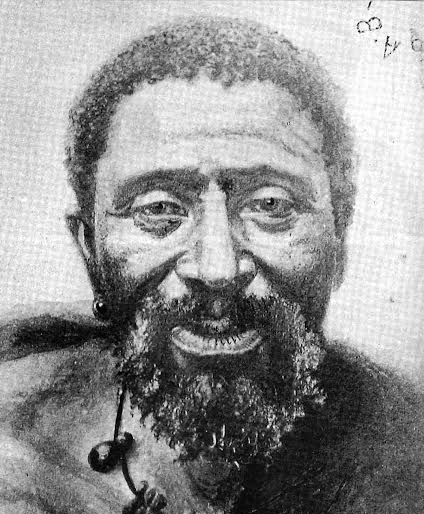 King Sarhili of Xhosa Land: Peires, Jeff. The Dead Will Arise: Nongqawuse and the Great Xhosa Cattle-Killing of 1856-7. Johannesburg and Cape Town: Jonathan Ball Publishers, 2003.
King Sarhili of Xhosa Land: Peires, Jeff. The Dead Will Arise: Nongqawuse and the Great Xhosa Cattle-Killing of 1856-7. Johannesburg and Cape Town: Jonathan Ball Publishers, 2003.
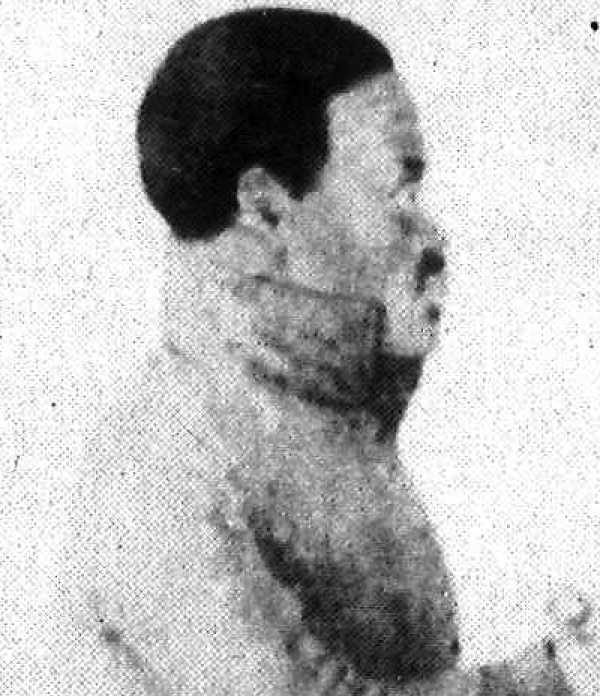 Chief Kama (Chief Phatho’s brother): Peires, Jeff. The Dead Will Arise: Nongqawuse and the Great Xhosa Cattle-Killing of 1856-7. Johannesburg and Cape Town: Jonathan Ball Publishers, 2003.
Chief Kama (Chief Phatho’s brother): Peires, Jeff. The Dead Will Arise: Nongqawuse and the Great Xhosa Cattle-Killing of 1856-7. Johannesburg and Cape Town: Jonathan Ball Publishers, 2003.
It was King Sarhili’s sanction and belief that may have added weight to the ‘Cattle Killing Movement’ when he visited Mhlakaza’s homestead on the 10th of July 1856. [107] After he sent word out to the Xhosa nation about complying with the instructions of the prophecy, many more people visited the Gxarha. [108] However, Peires emphasises that auditory and visual qualities played a huge role in what people may have seen, felt or experienced at the Gxarha and that “Nongqawuse’s demonstrations were only effective when shown to those already converted in their hearts.” [109] In addition the historian Gqoba wrote (translated in English):
“Just then, the young maiden said: ‘Do cast your eyes unto the sea’. When they focused on the waves of the sea, it was as if people were truly there, and as if bulls were bellowing also, and oxen too, and a distant black mass constantly went backwards and forwards, until it again departed and disappeared over the horizon yonder, in the waves of the sea, and then all the people believed for the first time.” [110]
Chief Ngubo is one of the few who is known to have confronted Nongqawuse when he went to Gxarha; and not being persuaded he called her an imposter. [111] While some Chiefs opposed the killing of the cattle, others permitted it but did not encourage it. Chiefs Kama, Toyise and Siwana were some of those who did not buy into the prophecy. Chief Sandile was more indecisive and Chief Mhala was inclined to believe it but strongly advised against acting on it by his councillors. Chiefs’ whose districts were severely hit by lungsickness and crop failures like that of Chief Phatho and Maqoma, reacted in favour of the prophecy. As much as the cattle killing did not initially turn into a full scale movement, people begun killing their cattle, refrained from eating the meat, drove the cattle off to be sold at prices below its value and destroyed the produce of their cultivation. [112]
5.2. The Prophecy in Retrospection ↵
The prophecy uttered by Nongqawuse was not unique, as mentioned earlier, by 1855; more than five prophets had sprung up and were preaching much of the same that Nongqawuse was.
The element of cattle killing in the prophecy was also not unique in that both Nxele and Mlanjeni had advocated for it in their respective periods of influence. In fact it was Nxele who had made popular the notion of an apocalypse and brought forth the idea of resurrection to the Xhosa when “He ordered people to abandon witchcraft, to slaughter all red cattle and to destroy stores of corn.” [113] He too predicted the rising of the ancestors and new cattle. The key difference between these men and Nongqawuse is that they were also war doctors and led warriors in battle against the colonialists in the ‘frontier wars’. This was similar to the backdrop of the rebellion in Zimbabwe from 1896-1897. [114] Masses of cattle and crops had perished due to natural causes and a spiritual leader among the amaNdebele had risen to influence leading the people to take up arms against the white colonialists who were seen as responsible for their losses. [115]
Contrary to the war-plot thesis, Nongqawuse was not advocating the killing of cattle in preparation for war. There was no intention to fight the colony. The distinction of the movement lay in the particular set of circumstances the Xhosa nation found themselves in and the number of factors at play against and within their society; outlined as the context to this section. The prophecy was purely geared towards believers acting in faith and in preparation for the receiving of assistance from the spiritual world.
What does remain peculiar is how a young girl inherited the movement that resulted in the destitutions and break-up of the Xhosa nation. It is unclear to what effect she commanded the movement in her own capacity for she operated in tangent with Mhlakaza and there is a lack of information about her engagements and words.
6. The Movement ↵
The ‘Cattle Killing Movement’ was subjected to warped and dramatized information that spread throughout Xhosaland and British Kaffraria; thus the rumours people engaged and contributed in had a hand at keeping the faith intact. Nevertheless there were always spurs of uncertainty particularly stemming from the issue of dates illustrated by the inability of some believers and Chiefs to completely rid themselves of all their cattle. This effectively also kept the movement going in light of the logic and clarity of its very specific instructions.
6.1. Action ↵
The momentum of action was sustained by promises of new dates at every interval that individuals demanded to see the evidence of what the prophecy declared, if adhered too. This is due to Mhlakaza’s preaching over the movement. [116] People were criticised for not sacrificing the cattle and selling it instead. It was critical that the soul of the animal be preserved. The ritual of sacrifice was cleansing and purifying upon the homestead. [117] The fact that people were not killing all their cattle was also blamed for the lack of the appearance of those who were promised to be raised. Blame was further laid on the unbelievers. Mhlakaza described the day that people could look to as a fulfilment of the prophecy. It would be the day when two suns would rise red in the sky and darkness would envelope with a great storm that the houses of the believers would withstand. [118] On that day the righteous dead and the cattle would rise and the colonialists with their collaborators would retreat into the sea. [119] At each month from June 1856 to the latest June 1857 before complete disillusionment set in, it was the expectations of this scene that people waited upon.
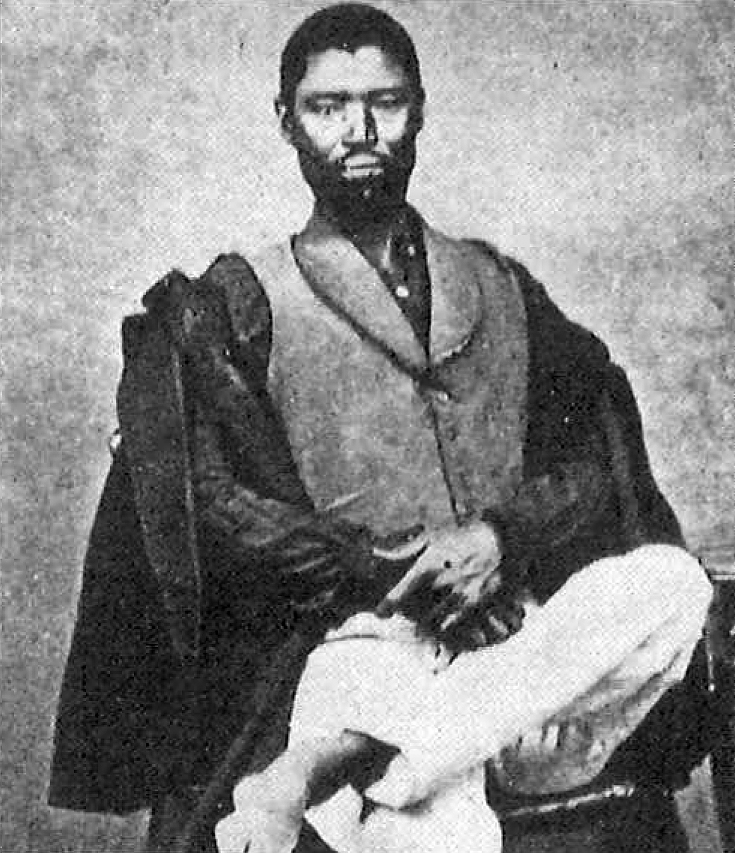 Chief Sandile of the Ngqika in British Kaffraria: Peires, Jeff. The Dead Will Arise: Nongqawuse and the Great Xhosa Cattle-Killing of 1856-7. Johannesburg and Cape Town: Jonathan Ball Publishers, 2003.
Chief Sandile of the Ngqika in British Kaffraria: Peires, Jeff. The Dead Will Arise: Nongqawuse and the Great Xhosa Cattle-Killing of 1856-7. Johannesburg and Cape Town: Jonathan Ball Publishers, 2003.
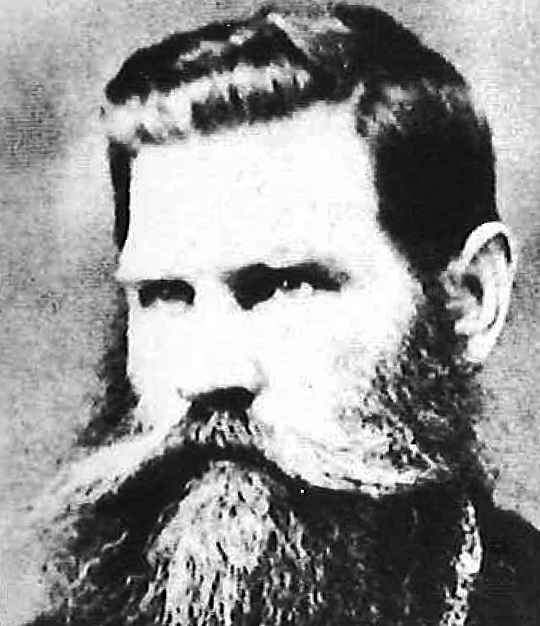 Charles Brownlee: Peires, Jeff. The Dead Will Arise: Nongqawuse and the Great Xhosa Cattle-Killing of 1856-7. Johannesburg and Cape Town: Jonathan Ball Publishers, 2003.
Charles Brownlee: Peires, Jeff. The Dead Will Arise: Nongqawuse and the Great Xhosa Cattle-Killing of 1856-7. Johannesburg and Cape Town: Jonathan Ball Publishers, 2003.
Naturally the layman Xhosa took his lead from the Chiefs, who were in very complex positions in this situation and their actions and words held immense sway among the Xhosa nation. King Sarhili for instance, had fully committed himself to the prophecy and sent word to all other Chiefs to obey its instructions. In periods of disillusionment, if he did not send representatives to confer with Mhlakaza and Nongqawuse, he would personally visit the Gxarha. However, he only committed the mass slaughter of his own cattle in January 1857. [120] When Governor Grey tried to reprimand King Sarhili and deter him, the King responded that Grey had no right to interfere in the affairs of the Xhosa and that he did not recognise Grey’s right to prohibit communication with the Chiefs in British Kaffraria. [121]
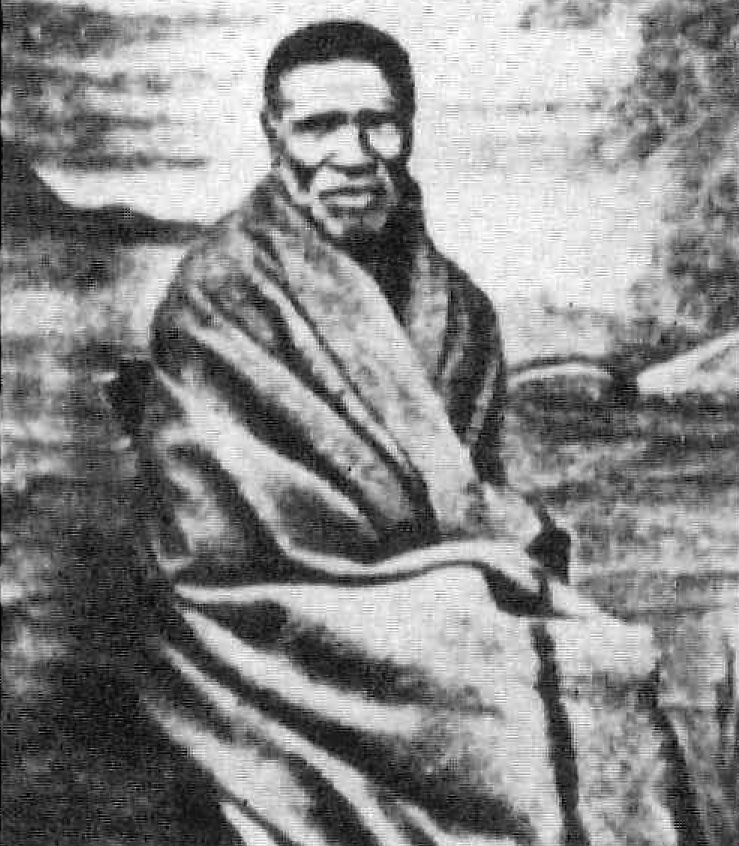 Chief Mhala of the Ndlambe: Peires, Jeff. The Dead Will Arise: Nongqawuse and the Great Xhosa Cattle-Killing of 1856-7. Johannesburg and Cape Town: Jonathan Ball Publishers, 2003.
Chief Mhala of the Ndlambe: Peires, Jeff. The Dead Will Arise: Nongqawuse and the Great Xhosa Cattle-Killing of 1856-7. Johannesburg and Cape Town: Jonathan Ball Publishers, 2003.
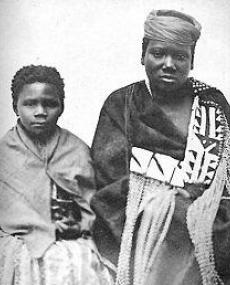 Nonkosi (on the right) Image source
Nonkosi (on the right) Image source
Chiefs did not make isolated decisions. They were influenced by their councillors, their family members and the magistrates placed at their hem. For example, Chief Sandile holding great command over the Ngqika was characterised with a chameleon nature for his indecision on the matters of the prophecy. It was easier for Chief Sandile to be hesitant because his was the last territory to be hit by lungsickness. [122] Nonetheless, he was under great pressure from Charles Brownlee, the magistrate placed at his jurisdiction, to encourage his people to ignore the instructions of the prophecy. [123] Sometimes the Chief would undertake to kill his cattle in discretion and at other moments he would make public sanctions against the movement. In 1857, Chief Sandile was under particular pressure from Chiefs Maqoma and Mhala, to take a decisive stand; he then dispelled the unbelievers of the prophecy out of his district. [124]
In Chief Mhala’s district, at Mpongo, an eleven year old girl by the name of Nonkosi was attributed to sustaining the movement in the dawn of disillusionment when she prophesied to experience the same visions as that of Nongqawuse in January 1857. [125] She was consulted and visited by Chief Mhala whose faith was renewed. [126]
The following table from Peires helps simplify the relevant factors of each Chief’s situation in the movement.
CHIEF | CATTLE-KILLING | *LAND | RELIGION | LUNGSICK |
Sarhili | Strong believer | Unchanged | Strong precolonial | Heavy |
Mhala | Strong believer | Unchanged | Strong precolonial | Heavy |
Phatho | Strong believer | Unchanged | Strong precolonial | Heavy |
Maqoma | Strong believer | Severe | Strong precolonial | Heavy |
Bhotomane | Strong believer | Severe losses | Precolonial | Heavy |
Sandile | Waverer | Severe losses | Precolonial | Delayed arrival |
Feni | Waverer | Severe losses | Precolonial | Delayed arrival |
Kama | Strong unbeliever | Gainer | Christian | Heavy |
Dyani Tshatshu | Strong unbeliever | Unchanged | Christian | Heavy |
Toyise | Strong unbeliever | Gainer | Strong precolonial | Heavy |
Anta | Strong unbeliever | Severe losses | Precolonial | Light |
Mfengu Chiefs | Strong unbelievers | Large gains | Christian leanings | Heavy |
*Refers to effects of Frontier Wars on land holdings [127]
Besides the influence of the Chiefs, laymen Xhosa had to rely on their own perception of events to make a decision on the matters of the prophecy. What may have influenced their outlook was the lungsickness disease and how they understood it, their attitudes to European imperialism and all the changes being wrought in their environment as a result of colonial onslaught, their religious outlook and their status or class position. [128] A curious observation by Peires, is the majority of females who accepted the prophecy. [129] Otherwise, the movement could be regarded as a national one, because even unbelieving Chiefs like Kama could not contain the actions of the believers in their district. [130]
Beyond the cattle-killing, was the matter of cultivation and by September 1857 decisions had to be made on whether to sow into the land. [131] Again this was a difficult decision to make, and the Chiefs’ word on it was more sacred, because they would always sanction the commencement of the sowing. [132] The faithful believers of the prophecy did not cultivate, some going as far as trampling the grounds of those who did sow. [133] When famine began to set in, people still held onto the hope of the new beginnings that the prophecy promised them.
6.2. Division ↵
“The sight was now seen of father divided against son, and brother against brother, and ruler against his people, and blood relation against blood relation” [134]; so significant was the division caused by the prophecy that two groups emerged in the movement: the amagogotya(unbelievers) and the amathamba (believers). [135]
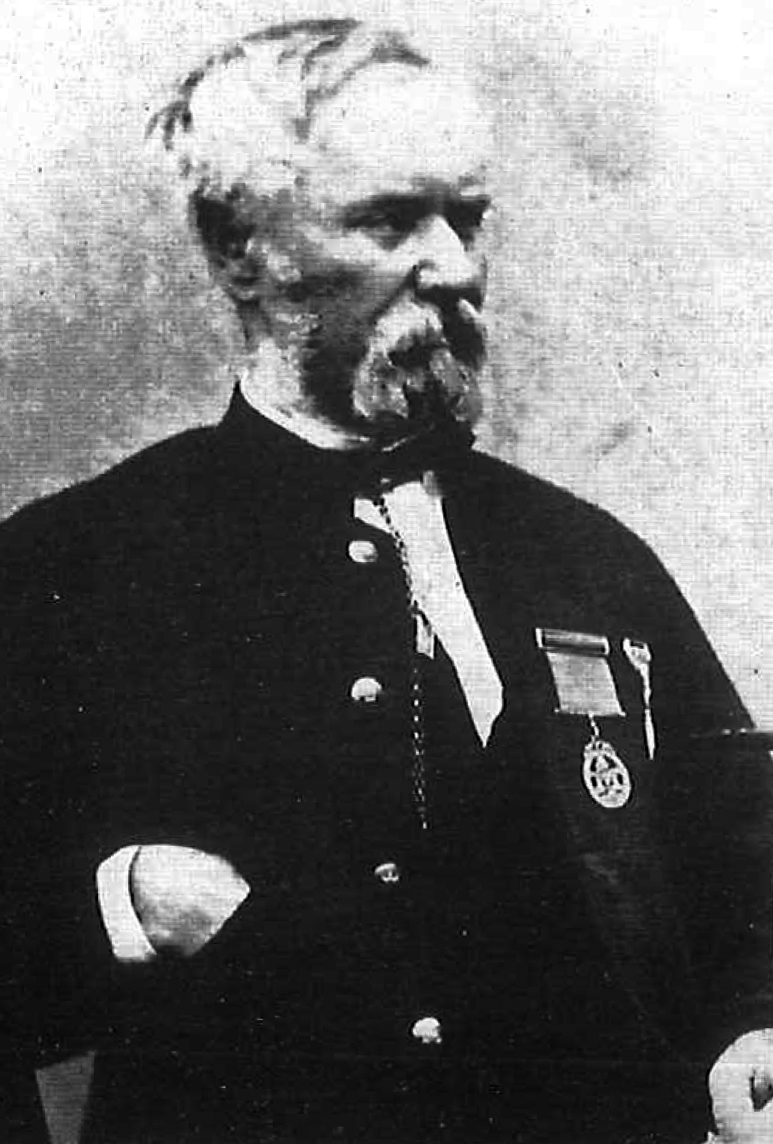 Lieutenant-Colonel John Maclean: Peires, Jeff. The Dead Will Arise: Nongqawuse and the Great Xhosa Cattle-Killing of 1856-7. Johannesburg and Cape Town: Jonathan Ball Publishers, 2003.
Lieutenant-Colonel John Maclean: Peires, Jeff. The Dead Will Arise: Nongqawuse and the Great Xhosa Cattle-Killing of 1856-7. Johannesburg and Cape Town: Jonathan Ball Publishers, 2003.
To make matters worse Mhlakaza and Nongqawuse would use the unbelievers’ actions as the logic that was preventing the fulfilment of the prophecy. Another example is when the presence of Chief Nxito was demanded as a prerequisite to the fulfilment of the prophecy. Nongqawuse and Mhlakaza insisted on his return to their district to be near his father’s grave. [136] Chief Nxito was an unbeliever and though he obliged their requests he remained an adamant unbeliever, such that he blatantly told King Sarhili that Mhlakaza had nothing to show in mid-December 1856. [137] Mhlakaza arranged a meeting between Chief Nxito and some of the people that the prophecy referred, to who would rise. [138] There were rumours flying around that some of the people had already arisen, with some making declarations that they had already begun to be spotted. But, Chief Nxito sent an unbeliever spy by the name of Makombe prior to the meeting to check on Mhlakaza and when he had been caught, Mhlakaza blamed Chief Nxito’s unfaithful actions for the wrath of the risen people who decided to retreat. [139]
Antagonism was thus targeted towards the unbelievers and they were deemed impure. [140] Some unbelievers killed some of their cattle simply out of fear of the believers. [141] It broke families in the sense that initially family members would try to convince each other, but when the movement became desperate it separated family members. For example, Maqoma’s Right Hand son, Kona was an unbeliever and his father and senior brother, Namba, were believers. Kona had fought with his family and moved away from them. [142] Eventually, his mother deserted him and he feared for his life as demonstrated by his appeals to Brownlee for refuge. In a distinct gesture, they moved Kona to Fort Murray. [143]
When destitution set in, the believers engaged in violence and attacked the unbelievers such as the 12th of March 1857, when believers attacked the homesteads of Pityi and Sam, killing the men and taking their cattle. [144] Believers would also gather in groups to raid the properties of the unbelievers. As more pressure was directed on the prophets and they were threatened, Mhlakaza began to dissolve all responsibility and claimed that he received all communications from Nongqawuse, who was the medium to the spirits. [145]
6.3. Colonial Reaction
When the seriousness of the movement dawned on the colonial government, Lieutenant-Colonel John Maclean wrote to Chief Sarhili threatening the King to halt the movement or the colony officials would invade his country. [146] The letter never reached King Sarhili, because of the reprimands of Grey. When Brownlee attempted to visit King Sarhili with Chief Sandile at Hohita in the hope of influencing a confrontation of the prophets and the royal leaders, he was stopped by Grey. [147] Grey arrived in King Williams Town in September 1857, and instead of dealing with the movement at hand, he was more interested in enforcing more of his policies. [148] At this point he ordered that the pay of the councillors would be revoked and instead used to pay headmen in each district to organize an unpaid police force to maintain order and restore stolen cattle when the aftermath of the movement set in. [149] Grey then proceeded to visit the Chiefs privately and left no record of his proceedings with them, but his engagement with them seemed to drive them more into faith in the prophecy than adherence to him. [150] Another of Grey’s action’s which fuelled a renewed hope in the movement was his request of the HMS Geyser to stop en route from Natal to Cape Town at the Kei River. [151] There, the ship capsized and the Xhosa who had gathered there in anticipation of an attack were astounded. [152] The incident was attributed to the promises of the prophecy.
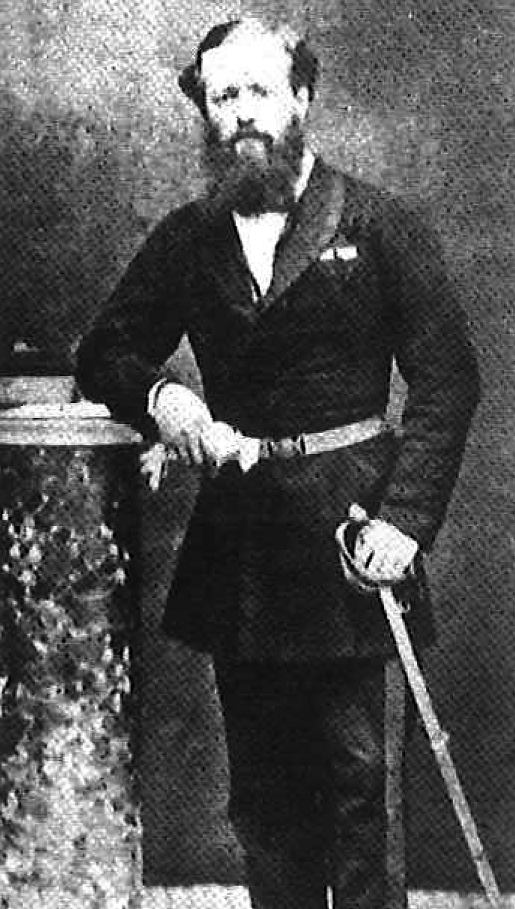 Major John Cox Gawler: Peires, Jeff. The Dead Will Arise: Nongqawuse and the Great Xhosa Cattle-Killing of 1856-7. Johannesburg and Cape Town: Jonathan Ball Publishers, 2003.
Major John Cox Gawler: Peires, Jeff. The Dead Will Arise: Nongqawuse and the Great Xhosa Cattle-Killing of 1856-7. Johannesburg and Cape Town: Jonathan Ball Publishers, 2003.
Grey was also resilient to the pleas of assistance from the unbelievers who felt increasingly under threat by the believers. Grey strictly ordered the magistrates to do nothing, for example when Chief Sandile dispelled the unbelievers in his territory, Brownlee was unable to locate them new territory. [153] The only official reasoning behind Grey’s stance was his claims of a war plot against the colony by the Xhosa Chiefs and King Sarhili. Grey insisted, despite the absence of evidence to all involved in that period, that the royal leaders of the Xhosa were inciting people to kill their cattle so that they could fully commit themselves to a battle against the colony. [154] Gqoba accurately states:
“If cattle were but slain for war to be waged, then oxen alone would have been killed, and shields strengthened, and weapons forged in earnest in all this land of amaXhosa, and blades fixed to shafts. There would have been amagogo, seers, like Mlanjeni, and Ngxito, to put men in the right state to fight a war. If it were a war scheme, why were those things absent?” [155]
It was Major John Cox Gawler, the magistrate in Mhala’s district that devised a self-defence plan for the unbelievers, consisting of a native police force. [156] Supported by Grey, Gawler set up a post on the Tshabo River where unbelievers flocked to him as well as disillusioned believers thrown into a state of destitution. [157] As a result, Chief Mhala’s hold on his people was broken. Worse, was the reputation of the police force under Gawler who undertook scorched earth tactics in dealing with theft and raiding by the believers’.
“The records draw a discreet veil of silence over Gawler’s six-month rule of fear”. [158]
The prophecy made by Nongqawuse, distinct from that of war doctors and other minor prophets of the past with similar content, was elevated and well promoted by the flurry of royals and commoners alike who engaged with her and Mhlakazi at the Gxarha or who were at the receiving end of their experiences; so much so that not even the resilience of unbelievers could control the movement.
7. Dusk of the Movement ↵
By early 1857, disillusionment began weaving its way amongst the Xhosa, but in feats of desperation and hope with little alternatives, they tried to hold onto the prophecy by killing more cattle. When hunger threatened the lives of the people, they resorted to theft and raiding. However, the unfolding of famine and loss and the disarray it caused, served the colony’s purpose. This purpose was articulated by Grey in 1855 at the Cape Parliament to “destroy the stubborn independence of the Xhosa nation by breaking the political and judicial powers of its Chiefs, by encouraging its commoners to abandon their communal and pastoral ethos in favour of wage labour, and by disrupting its territorial integrity through the settlement of white in British Kaffraria and of Xhosa in the Cape Colony.” [159]
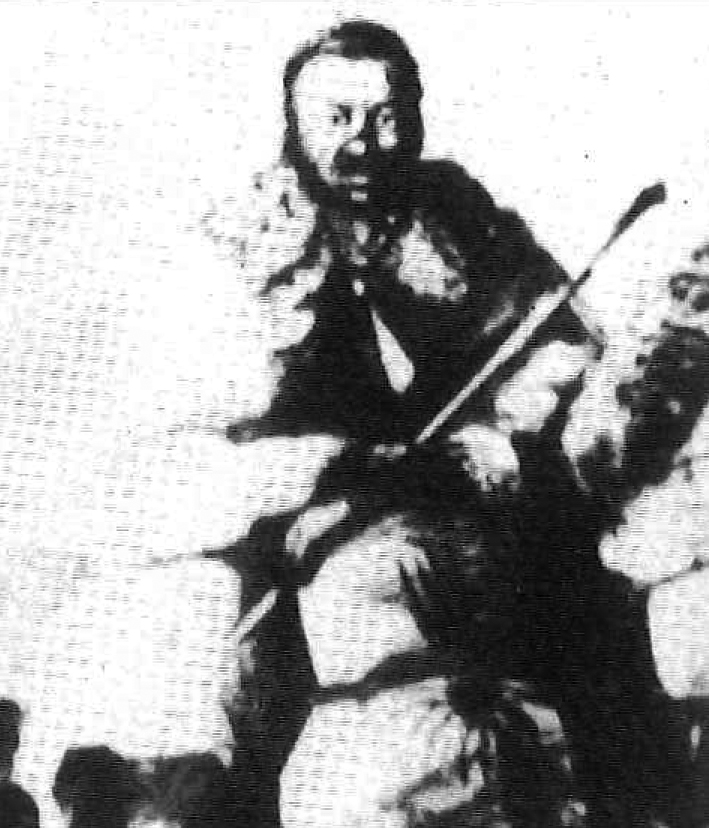 Chief Phatho of the Gqkunukhwebe: Peires, Jeff. The Dead Will Arise: Nongqawuse and the Great Xhosa Cattle-Killing of 1856-7. Johannesburg and Cape Town: Jonathan Ball Publishers, 2003.
Chief Phatho of the Gqkunukhwebe: Peires, Jeff. The Dead Will Arise: Nongqawuse and the Great Xhosa Cattle-Killing of 1856-7. Johannesburg and Cape Town: Jonathan Ball Publishers, 2003.
In a state of famine and destitute, Xhosa risked their lives in the face of the police forces that had not just been formed by Gawler, but by other magistrates as well, to survive. During the peak of the movement, some people survived off trading whilst others scrummaged in the veld. Some people fled to Mpondoland, Lesotho and Thembuland. [160] Grey was adamant in not providing relief to the Xhosa and he clamped down on any charity works such as the ‘Kaffir Relief Committee’. [161] On the 3rd of March 1857 he made a proclamation that labour works would be provided for those in destitution and anyone caught in the act of theft could be shot on the spot. [162] Most significantly thieves were allowed to be ‘transported’; convicted for labour works. The proclamation was quite general in that it could be abused and the police forces assisted in its implementation. [163] For example, one Tiligama, part of a group who tried to steal maize from the Peelton mission gardens was caught. [164] The group had run away when they had been fired on and they did not put up a resistance, much less were they armed. Despite this Tiligama was forced to confess that he had carried a spear and was convicted to be transported for seven years. [165]
Robberies occurring outside British Kaffraria were also made the business of colonial authorities to eradicate. [166] The aims of transportation were twofold. One, Grey wanted to eradicate the Xhosa from British Kaffraria and establish white settlement. [167] Two, there was severe labour shortages in the colony and the government saw the Xhosa as a means of filling up the gap in the market. [168] Officials were thus instructed only to provide rations to those who would give up their labour. [169] In June 1857, 13 137 Xhosa people were sent to the colony as labourers and in February 1858 it went up to 22 150. [170] There were even non-governmental traders like Piet Coots who collected destitute Xhosa people from their homes and sold them to farmers and James Hart who staged auctions in Graaff-Reinet and Beaufort West. [171] Grey:
“Instead of nothing but dangers resulting from the [Xhosa] having during the excitement killed their cattle and made away with their food, we can draw very great permanent advantages from the circumstances, which may be made a stepping stone for the future settlement of the country.” [172]
Grey did much to streamline the evacuation of the Xhosa from British Kaffraria in their absolute weakest state and into labour provisions for the colony. He introduced acts like the ‘Kaffir Pass Act’, prohibiting the Xhosa from independently seeking work in the colony, and the ‘Kaffir Employment Act’, which entailed the registration of contracts between the Xhosa and their employer. [173] For the riddance of Chiefs, Grey also manipulated the law.
The Chiefs were essential in removing, so that the land could be settled by white people. For this, Grey found excuses to target, unfairly trial and jail them. For example, Chief Maqoma was blamed for the death of Fusani, a police informant, at the hands of a group of men from his district who had enacted revenge on him. Chief Maqoma had not even been at the scene of the murder. He was imprisoned for 20 years. [174] Chief Phatho’s territory was a priority for white settlement and though in disillusionment about the prophecy he was not seeking colonial assistance. [175] Chief Phatho was put on trial for the possession of stolen horses. [176] Chief Phatho with a lack of evidence against him was still sent off for five years on transportation. Chief Mhala was put on trial for treason. Based on the war plot thesis fabricated by Grey for this purpose, witnesses such as Nonkosi and her father Nkwintsha were threatened into giving up false statements of evidence against Chief Mhala. [77] By the end of January 1858 Chief Phatho’s sons Dilima and Mate and Chiefs’ Qasana, Tola, and Xhoxho were imprisoned. [178]
Faced with the need to survive, previously anti-Christian Chiefs turned to missionaries for help. However, Grey blocked this avenue of relief by withdrawing financial aid from the missions and in Chief Mhala’s district, for example, the St Lukes Mission actually closed down. [179] Chief Sandile asked Brownlee to take care of his three children and again Grey interfered. [180] He wanted the Chiefs’ children for the ‘Kaffir College’ he had set up in Cape Town, later named ‘Zonnebloem’. [181] The school was intended to create an elite of “black Englishmen”. [182] In the end Chief Sandile and his Councillors children, the sons of Mhala, Phatho, Anta and Kama, as well as the grandchildren of Maqoma, were given up for the ‘Kaffir College’. [183]
For the claim of Xhosaland, the removal of King Sarhili was critical. King Sarhili who lost most of his cattle moved out of Hohita back to Butterworth, where his father had previously resided. [184] He made numerous attempts to reach out to the Bishop of Grahamstown and Governor Grey to request aid and to submit apologies for the ‘Cattle Killing Movement’. [185] King Sarhili was deeply concerned for the survival of his children and his people. Grey ignored King Sarhili, and instead opted to invade the already desolate Xhosaland which situated outside the jurisdiction of the colony, had never actually posed a substantial threat to the British to warrant an invasion. [186] The attack against King Sarhili was justified by Grey through his claims that the King and his people had been plotting against the colony by driving the Xhosa to kill all their cattle and stop their cultivation thus forcing them to go to war against the British (war plot thesis). [187]
The invasion of King Sarhili’s region resulted in further violence done against the Xhosa and left them more disenfranchised than ever. “None pf the volunteers who participated in that infamous commando have left a detailed account of the crimes that were committed against a starving and defenceless population.” [188] King Sarhili, along with a bodyguard took refuge in forests of Cwebe, east of the Mbashe River. [189]
So the Xhosa kingdom was disintegrated and the land reshaped to the desires of the colonialists as the disenfranchised Xhosa nation was culturally scarred, divided and left at the helms of the colonial government in the hopes of mere survival.
8. Perspective Frameworks ↵
The ‘Cattle-Killing Movement’, for its disastrous effects to the Xhosa nation, cannot be understood in isolation of 1856-1858. The history of precolonial Xhosa and the contact of Europeans to that society is integral in mapping out the themes and factors to take into consideration, because there is no one single answer to explain the movement. It had a host of dynamics at work.
In the literature of this period in history, there are a number of frameworks, perspectives and meanings propagated to explain the ‘Cattle Killing Movement’, some of which can be viewed as follows:
The White Perspective [190]
This covers lungsickness, ancestral worship and the war plot thesis. Explanations place the disease as a fore fronting reason for the killing of the cattle. [191] They also emphasise Xhosa spirituality and the significance placed on their relationship with the ancestors as a reason for the faith in the prophecy. [192] The weakest argument propagated by Grey himself, with no evidence, is the war plot thesis – that the chiefs were plotting war against the colony. [193] This all paints a picture of a national suicide of sorts by the Xhosa. [194]
The African Perspective
African oral traditions attribute blame for the destruction of the Xhosa nation on Nongqawuse herself. The prophetess has been accused of being exploited and used by the colonialists, whether as an active collaborator or a naïve agent. They refute strong elements of the white perspective. Gqoba describes how actual war preparation occurs, and distinguishes between Nongqawuse and Mlanjeni and Nxele. [195] They also reject the emphasis on Xhosa spirituality and ancestry, because of the similarity of Nongqawuse’s prophecy to Christian religious elements, which had been spreading its influence through the works of the missionaries. [196] They propagate the view that “the presence of the White intruders among the Xhosa was the root cause of the Cattle-slaughter.” [197] This view expounds from the changes wrought onto precolonial African society by colonial onslaught. [198] Others, including oral tradition, argue that the ‘Cattle Killing Movement’ was a plot hatched by the colonial officials to destroy the cultural sanctity of the Xhosa nation, who were military weak but socially strong and cohesive. This article, as objective as it has tried to remain, may have been geared and more favourable towards this perspective.
The Feminist Perspective
Bradford makes her assessment of Nongqawuse from a gender analysis, treating Nongqawuse as an active agent in the whole saga. She considers that Nongqawuse may have been a victim of incest, orphaned by her parents specifically due to colonial conflict, and raised by her religious guardian. [199] With this in mind Bradford gives attention to the significance of the halt of cultivation, which is deemed womens’ work, and the appeal to stop witchcraft, adultery and incest. [200] Bradford suggests that Nongqawuse was actively condemning immorality in her society drawing upon ancestry and prophecy to authorise her declarations. [201]
The Modern Perspective
The literate, Mqhayi brings fresh insight onto the table. He is critical in questioning how Nongqawuse alone can be responsible for the movement. [202] He also believes that the prophecy remained truthful as depicted by the following excerpts from him written in 1912:
a. Whatever food there was must be thrown away, and huge pits must be dug, because they would be filled with food. And what is the situation today? Even if a person has not ploughed for ten years, maize is just imported from overseas and he can fill his sacks with grain, crushed mealies and mealie meal.
b. She said the cattle would arise. What is the situation? Someone who raises not even a goat gorges himself on beef. He eats sweet meal porridge, farmers’ food. No, today you cannot offer a neck portion to someone with no cattle.
c. She said the dead would arise. And what is the situation today? Captain Veldtman has often remarked: “The Xhosa did not produce many children, they began to produce children when Mfengu women arrived.” The Captain was telling the truth when he said so: among the Xhosa was unheard of for a man to produce ten children with one woman. [203]
a. Makulahlwe ukutya okukoyo, kumbiwe ezikulu izisele, kuba ziya kuzala kukutya. Kunjani ke okunene namhlanje? Angafanelana umntu engalimanga iminyaka elishumi, asuke umbona eze evela pesheya kwelwandle, amfumbe atsho ngesita sengxowa, ezizinkozo, ezirhayiweyo, ne zingumgubo.
b. Wati inkomo ziya kuvuka. Kunjani okunene? Udikwa yinyama yenkomo, utya isitubi ukutya kwamafuya, nongazange afuye nebhokwe le. Hayi namhlanje, akungeti wakuxhela unike intamo kongena nkomo.
c. Wati kuya kubako uvuko lwabantu. Kunjani okunene namhlanje? Ubesitsho futi u Captain Veldtman ukuti: “Ama Xosa la asibantu bebenayo nenzala le, bate ukuze babenokufumana inzala kwafika ezintokazi zase Mbo.” Ebeteta inyaniso ke u Captain xa atshoyo; kuma Xosa mzuzu ibingeko lento indoda ukuvisa eshumini abantwana ngamfazi mnye. [204]
9. Conclusion ↵
Today there lays a monument in King Williams Town, commemorating the diseased of the ‘Cattle Killing Movement’. It consists of a stone in the shape of horns over a square patch that is said to be where bodies were thrown into the ground. The state that this monumental site is in, is pitiful, with overgrown grass and litter surrounding it.
As much as the ‘Cattle-Killing Movement’ is a difficult and sore period in the history of the amaXhosa, however it is a necessary one to understand in its’ relation to the success of the establishment of colonialism in Southern Africa. The themes highlighted in the exploration of this history were merely synopsises to serve as a guiding hand to comprehending the ‘Cattle Killing Movement’.
Beyond the unreliability of colonial archive sources, is the language barrier that makes understanding the movement from the perspective of the amaXhosa more complex. The perspectives from which we write history matters in that it contributes to the meanings historians give to the past. As such history should never be taken for granted as equivalent to the past, but instead a tool of construction of the past. Most importantly, to avoid adopting the Eurocentric rhetoric of the sources left in our hands, we must remember that:
“[A]n African past is hard to English.” [205]
Endnotes
[1] Jeff Peires, The House of Phalo (Johannesburg and Cape Town: Jonathan Ball Publishers, 1981), 18
[2] Ibid, 22
[3] Ibid, 5
[4] Ibid, 6
[5] Ibid, 7
[6] Ibid, 23
[7] Ibid, 7
[8] Ibid, 8
[9] Ibid, 8
[10] Ibid
[11] Ibid
[12] Ibid
[13] Ibid, 9
[14] Ibid, 37
[15] Ibid, 32
[16] Ibid, 33
[17] Ibid, 25
[18] Ibid, 34
[19] Ibid, 39
[20] Ibid, 44
[21] Ibid, 74
[22] Ibid, 47
[23] Kwanele Sosibo, “Cows: The sacred and the profane”, Mail & Guardian, 8 April 2016 accessed 17 June 2017, https://mg.co.za/article/2016-04-07-cows-the-sacred-and-the-profane.
[24] Jeff Peires, The House of Phalo (Johannesburg and Cape Town: Jonathan Ball Publishers, 1981), 107
[25] Kwanele Sosibo, “Cows: The sacred and the profane”, Mail & Guardian, 8 April 2016 accessed 17 June 2017, https://mg.co.za/article/2016-04-07-cows-the-sacred-and-the-profane.
[26] Ibid
[27] P.T. Mtuze, “Hidden Presences in the Spirituality of the amaXhosa of the Eastern Cape and the Impact of Christianity on them” (MA diss., Rhodes University, 1999), 6
[28] Ibid, 6
[29] Ibid, 6
[30] Ibid, 26
[31] Ibid, 46
[32] Jeff Peires, The House of Phalo (Johannesburg and Cape Town: Jonathan Ball Publishers, 1981), 59
[33] Ibid, 60
[34] S.E.K. Mqhayi, Abantu Besizwe (Johannesburg: Wits University Press, 2009), 84
[35] Ibid, 94
[36] Ibid, 264
[37] Ibid, 268
[38] Ibid, 312
[39] Ibid, 304
[40] Ibid, 320
[41] Jeff Peires, The House of Phalo (Johannesburg and Cape Town: Jonathan Ball Publishers, 1981), 90
[42] Ibid, 59
[43] Ibid, 110
[44] Ibid
[45] Ibid, 107
[46] Ibid, 113
[47] Ibid
[48] Ibid, 121
[49] Ibid, 116
[50] Ibid
[51] Ibid, 120-121
[52] Ibid, 117
[53] Ibid
[54] Ibid
[55] Ibid, 120-121
[56] Nosipho Majeke, “The role of the missionaries in conquest”, South African History Online, 1952 accessed 17 June 2017, http://www.sahistory.org.za/archive/role-missionaries-conquest-chapter-ii-functions-missionary
[57] Jeff Peires, The House of Phalo (Johannesburg and Cape Town: Jonathan Ball Publishers, 1981), 76
[58] Ibid, 77
[59] Ibid, 78
[60] Ibid, 80
[61] Ibid, 85
[62] Nosipho Majeke, “The role of the missionaries in conquest”, South African History Online, 1952 accessed 17 June 2017, http://www.sahistory.org.za/archive/role-missionaries-conquest-chapter-v-political-role-mission
[63] Jeff Peires, The House of Phalo (Johannesburg and Cape Town: Jonathan Ball Publishers, 1981), 102
[64] Ibid
[65] Ibid
[66] Ibid, 104
[67] Ibid, 123
[68] Ibid, 126
[69] Ibid, 60
[70] Jeff Peires, The Dead Will Arise: Nongqawuse and the Great Xhosa Cattle-Killing of 1856-7 (Johannesburg and Cape Town: Jonathan Ball Publishers, 2003.), 24
[71] Ibid
[72] Ibid, 26
[73] Ibid, 33
[74] Ibid, 32
[75] Ibid, 36
[76] Ibid
[77] Ibid, 47
[78] Ibid, 45
[79] Ibid, 50
[80] Ibid, 54
[81] Ibid), 74-75
[82] Ibid, 79
[83] Ibid, 84
[84] Ibid
[85] Ibid, 85
[86] Ibid
[87] Jeff Peires, The House of Phalo (Johannesburg and Cape Town: Jonathan Ball Publishers, 1981), 185
[88] Jeff Peires, The Dead Will Arise: Nongqawuse and the Great Xhosa Cattle-Killing of 1856-7 (Johannesburg and Cape Town: Jonathan Ball Publishers, 2003.), 95
[89] Ibid, 93
[90] Ibid
[91] Ibid, 94
[92] Ibid, 95
[93] Ibid
[94] Ibid, 96
[95] Ibid
[96] Ibid, 97
[97] Ibid
[98] Ibid
[99] Ibid
[100] Ibid, 99
[101] Ibid, 98
[102] Ibid, 99
[103] Ibid
[104] Ibid, 100
[105] Ibid, 101
[106] Ibid
[107] Ibid, 108
[108] Ibid
[109] Ibid, 115
[110] Helen Bradford and Msokoli Qotole, “Ingxoxo enkulu ngoNongqawuse (A great Debate about Nongqawuse’s Era’”, Kronos (2008): 77
[111] Jeff Peires, The Dead Will Arise: Nongqawuse and the Great Xhosa Cattle-Killing of 1856-7 (Johannesburg and Cape Town: Jonathan Ball Publishers, 2003.), 115
[112] Ibid, 117-118
[113] Ibid, 159-160
[114] Kwanele Sosibo, “Cows: The sacred and the profane”, Mail & Guardian, 8 April 2016 accessed 17 June 2017, https://mg.co.za/article/2016-04-07-cows-the-sacred-and-the-profane.
[115] Ibid
[116] Jeff Peires, The Dead Will Arise: Nongqawuse and the Great Xhosa Cattle-Killing of 1856-7 (Johannesburg and Cape Town: Jonathan Ball Publishers, 2003.), 129
[117] Ibid, 125
[118] Ibid, 121
[119] Ibid
[120] Ibid, 172
[121] Ibid, 136
[122] Ibid, 131
[123] Ibid
[124] Ibid, 186
[125] Ibid, 223
[126] Ibid
[127] Ibid, 192-193
[128] Ibid, 192-197
[129] Ibid, 197
[130] Ibid, 144
[131] Ibid, 139
[132] Ibid
[133] Ibid
[134] Helen Bradford and Msokoli Qotole, “Ingxoxo enkulu ngoNongqawuse (A great Debate about Nongqawuse’s Era’”, Kronos (2008): 79
[135] Jeff Peires, The Dead Will Arise: Nongqawuse and the Great Xhosa Cattle-Killing of 1856-7 (Johannesburg and Cape Town: Jonathan Ball Publishers, 2003.), 198
[136] Ibid, 168
[137] Ibid, 169
[138] Ibid
[139] Ibid
[140] Ibid, 182
[141] Helen Bradford and Msokoli Qotole, “Ingxoxo enkulu ngoNongqawuse (A great Debate about Nongqawuse’s Era’”, Kronos (2008): 79
[142] Jeff Peires, The Dead Will Arise: Nongqawuse and the Great Xhosa Cattle-Killing of 1856-7 (Johannesburg and Cape Town: Jonathan Ball Publishers, 2003.), 184
[143] Ibid
[144] Ibid, 186
[145] Ibid, 122
[146] Ibid, 130
[147] Ibid, 132
[148] Ibid
[149] Ibid
[150] Ibid, 133
[151] Ibid, 145
[152] Ibid
[153] Ibid, 184-186
[154] Ibid, 184
[155] Helen Bradford and Msokoli Qotole, “Ingxoxo enkulu ngoNongqawuse (A great Debate about Nongqawuse’s Era’”, Kronos (2008): 85
[156] Jeff Peires, The Dead Will Arise: Nongqawuse and the Great Xhosa Cattle-Killing of 1856-7 (Johannesburg and Cape Town: Jonathan Ball Publishers, 2003.), 228
[157] Ibid, 231
[158] Ibid, 236
[159] Ibid, 239
[160] Ibid, 285
[161] Ibid, 273
[162] Ibid, 243
[163] Ibid
[164] Ibid, 247
[165] Ibid
[166] Ibid, 246
[167] Ibid, 244
[168] Ibid, 269
[169] Ibid, 270
[170] Ibid, 272 & 287
[171] Ibid, 272
[172] Ibid, 269
[173] Ibid, 271
[174] Ibid, 252
[175] Ibid, 253
[176] Ibid, 254
[177] Ibid, 258
[178] Ibid, 254
[179] Ibid, 288
[180] Ibid, 289
[181] Ibid
[182] Ibid, 290
[183] Ibid
[184] Ibid, 298
[185] Ibid, 301
[186] Ibid, 302
[187] Ibid, 240
[188] Ibid, 305
[189] Ibid, 307
[190] G.T. Sirayi, “The African perspective of the 1856/1857 cattlekilling movement”, South African Journal of African Languages Volume 11, Issue 1 (1991): 40
[191] Ibid
[192] Ibid
[193] Jeff Peires, The Dead Will Arise: Nongqawuse and the Great Xhosa Cattle-Killing of 1856-7 (Johannesburg and Cape Town: Jonathan Ball Publishers, 2003.), 240
[194] G.T. Sirayi, “The African perspective of the 1856/1857 cattlekilling movement”, South African Journal of African Languages Volume 11, Issue 1 (1991): 40
[195] Helen Bradford and Msokoli Qotole, “Ingxoxo enkulu ngoNongqawuse (A great Debate about Nongqawuse’s Era’”, Kronos (2008): 85
[196] G.T. Sirayi, “The African perspective of the 1856/1857 cattlekilling movement”, South African Journal of African Languages Volume 11, Issue 1 (1991): 43
[197] G.T. Sirayi, “The African perspective of the 1856/1857 cattlekilling movement”, South African Journal of African Languages Volume 11, Issue 1 (1991): 42
[198] Ibid, 43
[199] Helen Bradford, “Women, Gender and Colonialism: Rethinking the History of the British Cape Colony and Its Frontier Zones, C. 1806-70”, The Journal of African History Volume 37, Issue 3 (1996): 365
[200] Ibid, 361
[201] Ibid, 363
[202] S.E.K. Mqhayi, Abantu Besizwe (Johannesburg: Wits University Press, 2009), 74-75.
[203] Ibid
[204] Ibid
[205] Helen Bradford and Msokoli Qotole, “Ingxoxo enkulu ngoNongqawuse (A great Debate about Nongqawuse’s Era’”, Kronos (2008): 70